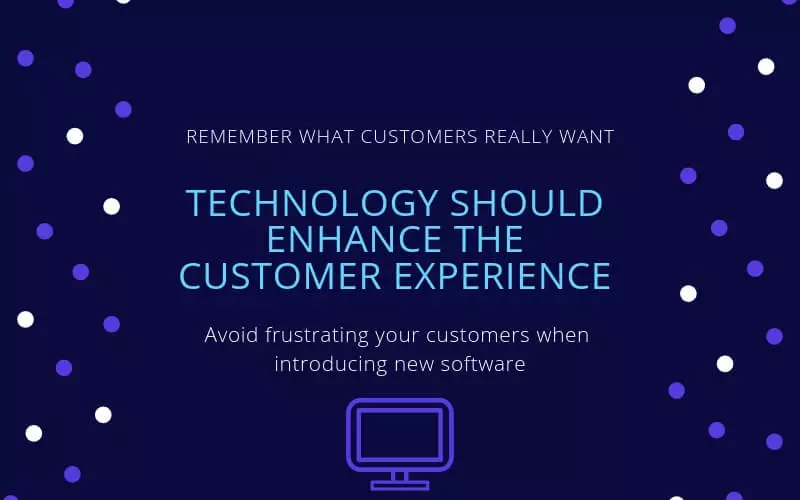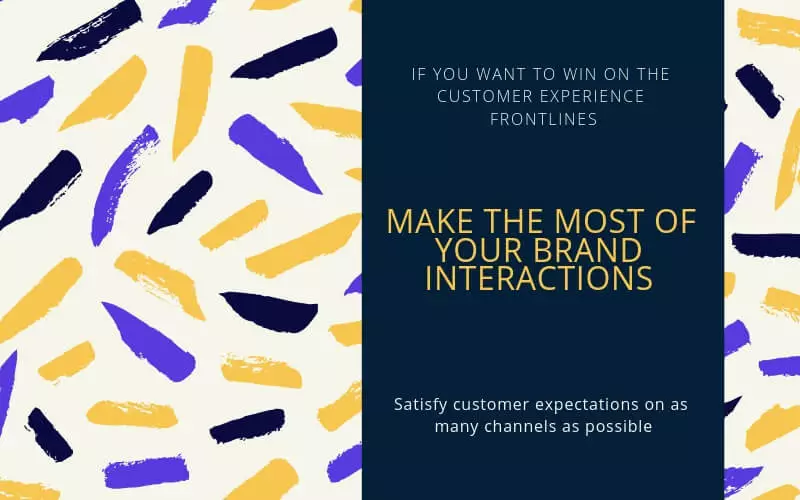Just two years ago, a multi-industry benchmark study found that three out of four companies agreed: it’s imperative to improve the customer experience.
In the digital age, consumers have the power — and are unafraid to weed out businesses that fail to personalize.
Can your company keep pace with the rise of digital customer expectations? It boils down to differentiation: To win, your brand’s CX must stand out among a paralyzing amount of choices.
According to Epsilon, eight in ten customers would rather do business with a company offering personalized experiences. As automation and AI take the reigns in creating personalized brands, new customer experience trends emerge.
But to build a relevant digital storefront, execution is king.
Below are four customer experience trends that could elevate your business — or turn consumers against your brand. Just don’t make these CX mistakes.
1. Brand new technology shouldn’t erode the human experience
Emerging technology is grabbing customer attention and brands want to be at the forefront of the next big thing.
Next on your reading list: How do you solve for customer journey pain points?
But according to PwC, unless new tech disrupts the customer experience, U.S. consumers may not notice the bells and whistles of a new feature or software. They will, however, notice if that new tech doesn’t work.
New technology should enhance customers’ perception of your brand. After all, PWC finds that all it takes is one negative  customer experience for 17% of people to ditch your product or brand — even if they love it.
customer experience for 17% of people to ditch your product or brand — even if they love it.
When implementing new tools to connect with your consumers, keep in mind what your customers really want.
Research shows that 80% of customers want convenience, speed, and knowledgeable help — and not simply the latest new software. Avoid frustrating your customers with new software and be mindful when you introduce something new.
2. Omnichannel support gone wrong: You’re amplifying touchpoints to frustrate customers
 Today’s digital customers interact with your brand on many different channels. To lead the competitive frontlines, your goal is to satisfy customer expectations on as many of those channels as possible.
Today’s digital customers interact with your brand on many different channels. To lead the competitive frontlines, your goal is to satisfy customer expectations on as many of those channels as possible.
If a customer wants to call the support desk, you should have that number readily available. If customers want to enter a digital chatroom to solve a problem, that support should be equally as accessible.
However, according to a Zendesk report, only 7% of consumers are satisfied with a brand’s ability to provide seamless omnichannel customer support.
Users want to feel empowered with the knowledge and ability to find assistance easily — at the moment they need it. However, multiple unlinked channels for support run the risk of confusing or frustrating users.
At its best, omnichannel support should deliver a meaningful, effortless customer experience.
3. What’s the issue with a surplus of user data? Data is only valuable when you use it
 Data collection is your key to understanding how to improve your brand’s customer experience. When you poll consumers, you can gauge their level of customer satisfaction and discover important information about your target user base.
Data collection is your key to understanding how to improve your brand’s customer experience. When you poll consumers, you can gauge their level of customer satisfaction and discover important information about your target user base.
However, what ends up happening after companies round up data? Large amounts of data sit around — with no plans for customer service leaders to analyze and leverage these insights. According to Forrester, almost 75% of data that organizations gather for analytics go unused.
With innovative technology, collecting data is not a challenge. But it is impossible to drive value from data unless it is being put to use.
You can easily track how many people call into your support desk with the same issue. What you do with that information is what makes it valuable.
Are you utilizing your data to design a customer-first strategy? If not, you’re wasting great access to data — key insights that could help you upgrade the customer experience.
4. Transitioning to full automation: Are you paying a cold, robotic price?
Automation has turned essential in improving business process efficiency. With technology now powerful enough to perform menial tasks for humans, companies are saving operational costs — and time.
has turned essential in improving business process efficiency. With technology now powerful enough to perform menial tasks for humans, companies are saving operational costs — and time.
As productivity soars, businesses continue to hop on the automation bandwagon. Gartner predicts that by 2020, customers will manage 85% of their relationship with a company without any sort of human interaction.
However, when it comes to customer experience, automation and AI can come at a human cost: 59% of consumers worldwide feel that companies have fallen out of touch with the people element of the customer experience.
Despite technology driving new customer experience trends forward, human connection remains the foundation that builds a consumer’s relationship with your company. Satisfied customers are more willing to forgive your brand if they experience a service glitch.
Ultimately, customers chase after simple, user-friendly experiences — and aren’t afraid to pick a brand competitor if you sacrifice personalized connection.
Don’t just adopt strong customer experience trends. Foster humanity in each interaction with your customers. Then, you’ll create a unique, emotional journey: One where happy customers feel drawn to choose your brand, time and time again.
_________
WalkMe’s Digital Adoption Platform (DAP) transforms the user experience in today’s overwhelming digital world. Using artificial intelligence, engagement, guidance, and automation, WalkMe’s transparent overlay assists users to complete tasks easily within any enterprise software, mobile application or website. Discover how a DAP can revolutionize your business — request a demo today.

